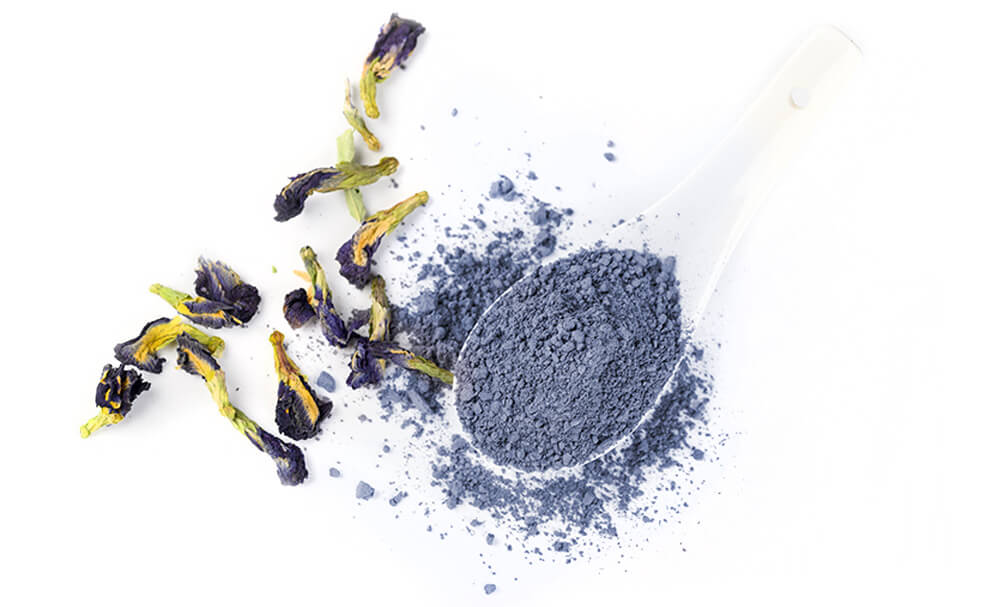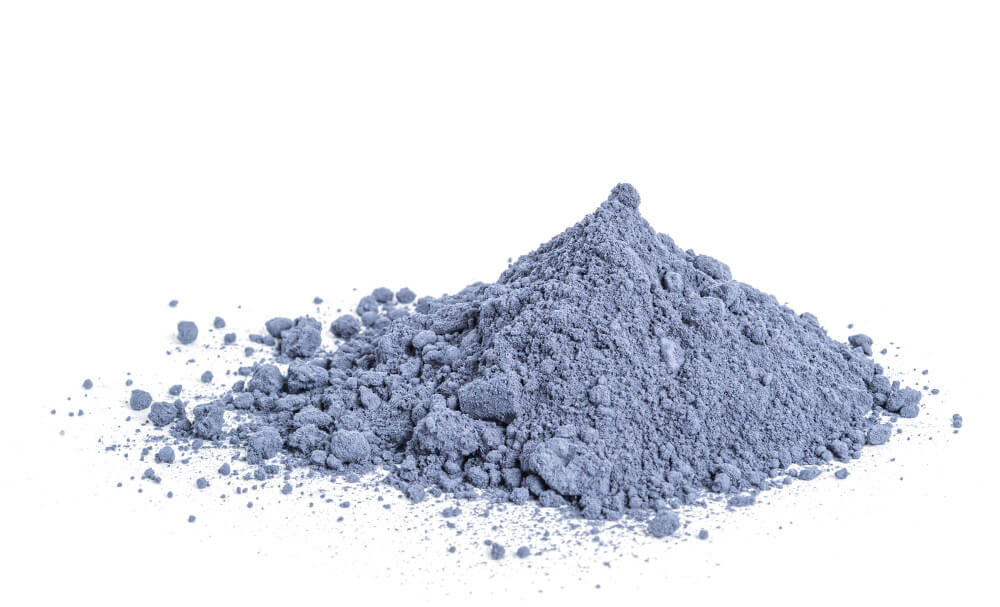featuring
NATURAL FOOD COLOR POWDERS
IN GLORIOUS TECHNICOLOR
Palatable hues
Though the main purpose of food is to fuel our bodies, for much of history our ingenuity and thirst for self-expression has taken this daily event as an opportunity to make art. From the ingredients chosen, to the way the dish is plated or seasoned, every aspect of a dish can be a chance to create something beautiful in flavor and in visual appeal.
With this bent toward artistry in mind, it seems only natural that humans would incorporate color in an arresting way. What could be more visually striking and alluring than a plate of food that boasts vibrant rainbow-esque hues? More recently, TikTok and Instagram foodies have devoted their feeds to making colorful foods. The internet is awash in unicorn smoothies, rainbow pancakes and purple pasta. It's a trend that's fun and filled with personal expression.
Despite this rise of this color craze on social media, natural food coloring powders aren't new. Some have been used in traditional recipes for generations. The colors—or the plants from which the color powders are derived—have been used symbolically or have become a symbols themselves through time, a testament to the allure and mystery of presenting a dish with such an unexpected attribute.
Natural food coloring powders can help add excitement to plates for littles and adults alike.
Natural food coloring powders are an excellent way to add vibrant hues to your dishes without resorting to artificial dyes. They are made from dried and powdered botanicals, which in some cases will not only add color but also distinct flavor, or sometimes even color-shifting properties to your creations.
No Butterflies Were Harmed in the Making
This color-shifting attribute is the case with one of the most popular natural food coloring powders, Butterfly Pea Flower powder. Also known as Clitoria ternatea, the flower from which the powder is derived is native to tropical parts of Southeast Asia. It is known for its brilliant other-worldly-looking deep blue hue and in its whole dried form is often infused in local traditional dishes to impart a shade of this color. The powder is made from the dried petals of the butterfly pea flower and when added to foodstuffs will have the same bluing effect. Uniquely, the color of these infusions is pH dependent. Changing the pH value of a dish will change the resulting pigmentation. The color can range from blue to purple—with the purple being achieved by more acidic foods.


Blue in the Face
As discussed, whole butterfly pea flower can be used in infusions. Over time the flower will lend its brilliant blue hue to the liquid in which it's been introduced. The longer the steep, and the more flowers used, the deeper the resulting color. For professional mixologists the pH sensitivity imparted to the drink adds an exciting performative aspect. They can serve the drink in its deep blue form and then add a dash of lemon or club soda to change its blue hue to purple!
The powdered version of this botanical is perhaps even easier to add to foodstuffs for the purposes of adding color. More powder will yield a darker color. Like infusing the flower, mixing in the powder will turn light colored foodstuffs brilliant blue. Happily, it also retains its pH sensitivity and adding acid to foods colored with the powder will also change the resulting color.
A Rosy Roselle
Another popular natural food coloring powder is Hibiscus flower powder. This powder is made from the dried petals of the hibiscus flower and is known for its bright magenta color. The plant it comes from is also commonly known as "Jamaica flower" or "Roselle", and it's often used to make traditional Mexican drinks such as "Agua de Jamaica" or "Jamaica Water."
Sorrel drinks made from hibiscus are a Jamaican holiday tradition with roots in Africa where it is known as "bissap." The flower (technically the calyx) of hibiscus is infused and then traditionally mixed with rum, spices, and other botanicals (e.g., allspice, ginger, cloves, cinnamon, orange peel).
Powdered hibiscus can be used to achieve a vibrant magenta hue in foodstuffs. Again, the more powder used the deeper the hue. However, users should be aware it has a unique tart flavor which will also increase in intensity with additional quantity, and some might wish to balance this taste out with sweeteners.
Developing Your Kodachrome
Mango juice powder, cranberry juice powder, matcha powder, and cacao powder are also great natural food coloring options. Mango juice powder will impart a soft sunny yellow whereas cranberry juice powder will yield a delicate pink. Matcha powder is a vibrant green color, and cacao powder is a rich brown color. All these powders are made from the dried and powdered fruits and leaves and can be used in a variety of ways. The color intensity can be adjusted by using more or less powder, and they can also be affected by the cooking medium. For example, matcha powder can have a more vibrant green color in a neutral medium, while cacao powder can have a more intense brown color in an acidic medium.
It's Not Easy Being Green
It's important to note that these natural powders can have a distinct flavor. For example, matcha powder has a strong grassy flavor, and cacao powder has a rich chocolate flavor. Some prefer to accent or balance these flavors with some sweeteners. Despite their unique and often exotic flavor profiles these powders can be used in a variety of recipes such as cakes, cookies, breads, puddings, custards, icings, smoothies, smoothie bowls, cocktails, mocktails, and traditional dishes.
Note These Nifty Newbies
We've expanded our natural food coloring line with three new powders: Beetroot, Purple Sweet Potato, and Black Cacao. They are available separately or together in the set Lovin' Hues.
Consider These Classic Components
You can also find all six of our other Natural food coloring powders available separately or in sets of three. Our set, Matcha Hue About Nothing, includes Cranberry Juice Powder, Matcha powder, and Cacao powder. Our original Palatable Hues set gathers Butterfly Pea Flower powder, Hibiscus flower powder, and Mango Juice Powder. This set contains two of our best selling natural food coloring powders: Butterfly Pea Flower and Mango Juice.
Making Good Use
All of these powders are a great way to add vibrant colors to your food without using artificial dyes. If you'd like some additional guidance on using these powders with different confections please see our Natural Food Coloring Powders Mixing Guide by Professional Pasty Chef, and Selefina Creator, Maggie Frank. More guidance can be found in an ongoing series by another of our Pastry Chef Creators, Brianna Shaver (of Garden Box Baking). Keep checking her article Hues-ing Natural Food Coloring Powders in Buttercream Icing/Frosting, she's been adding results with different powders. This article also includes a killer frosting recipe.
AVAILABLE
Michelin Guide: Ingredient: Butterfly Pea Flower, Mar 2019 (accessed Jan 2023)
Food52: How to Make Natural Food Coloring From Ingredients in Your Kitchen, by Erin Jeanne McDowell, Feb 2020 (accessed Jan 2023)
Serious Eats: Jamaican Sorrel (Hibiscus) Drink Recipe, by Jillian Atkinson, Feb 2021 (accessed Jan 2023)
Love & Lemons: Matcha 101 - What It Is and How to Use It, (accessed Jan 2023)
